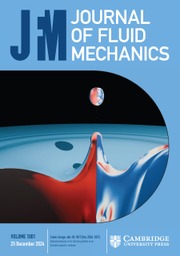Article contents
The effect of rotation on vertical Bridgman growth at large Rayleigh number
Published online by Cambridge University Press: 25 April 2000
Abstract
Convection effects in the melt of a vertical Bridgman furnace, used for solidifying a dilute binary alloy, are known to cause significant, and undesirable, non-uniformity in the alloy. We have found previously that non-axisymmetry significantly degrades the performance of the furnace at large Rayleigh number, Ra, and small Biot number, [Bscr ]. There have been a number of studies on improvement of the alloy quality by the introduction of additional forces into the melt flow – magnetic forces or d'Alembert forces due to various sorts of acceleration of the ampoule. In this paper, we explore the effects on the radial segregation generated by rotating the ampoule about its vertical axis. We determine that the magnitude of segregation is proportional to the product of [Bscr ] and the thickness of the thermal layer on the crystal–melt interface. As the rotation, as measured by a Taylor number, [Tscr ], increases beyond O(Ra1/3), the thermal layer thickens and so the segregation increases. Finally, at [Tscr ] = O(Ra1/2), the thermal adjustment occurs on outer scales, and hence the solutal concentration increases to O([Bscr ]). Hence rotation about the vertical axis actually degrades performance!
- Type
- Research Article
- Information
- Copyright
- © 2000 Cambridge University Press
- 7
- Cited by


